Leora J. Goodin
I'm a blogger dedicated to sharing insights on lifestyle and wellness. Through personal stories and practical tips, I aim to inspire and empower my readers to lead healthier, more fulfilling lives.
Students and teachers save a massive 71% on Creative Cloud All Apps
Black Friday and Cyber Monday 2023 Deals for Motion Designers, grab it now!
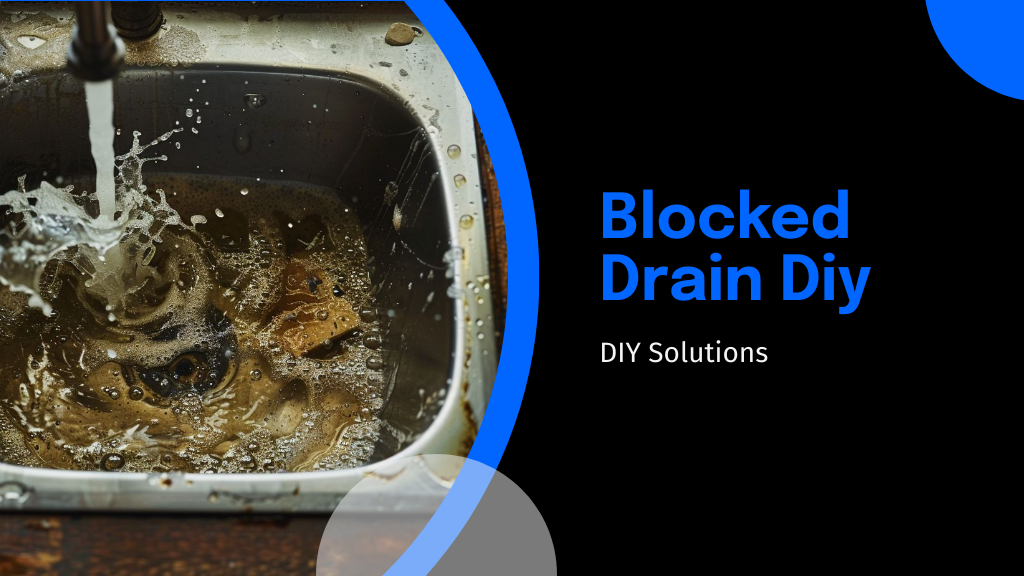
Block that drain with these 10 simple DIY solutions, but what's the secret trick that ensures lasting results? Discover it inside!
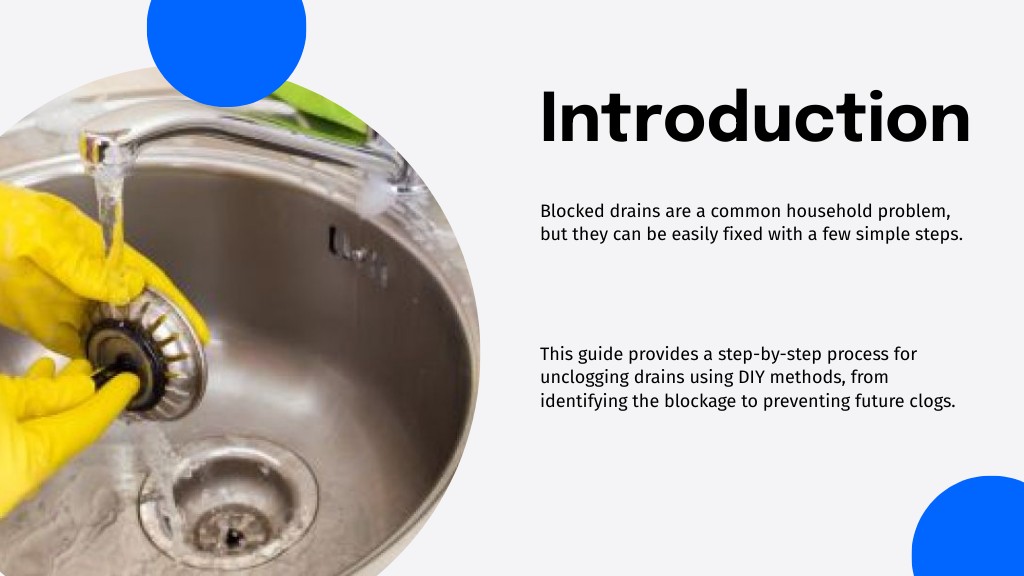
To tackle a blocked drain, start by identifying the blockage type. Gather tools like a plunger and rubber gloves. Try the boiling water method to dissolve grease. If that doesn't work, use a baking soda and vinegar solution. A plunger is effective for creating suction. Don't forget to clean the trap if needed. Prevent future clogs with regular maintenance. If problems persist, consider reaching out for professional assistance. Discover more helpful techniques next!
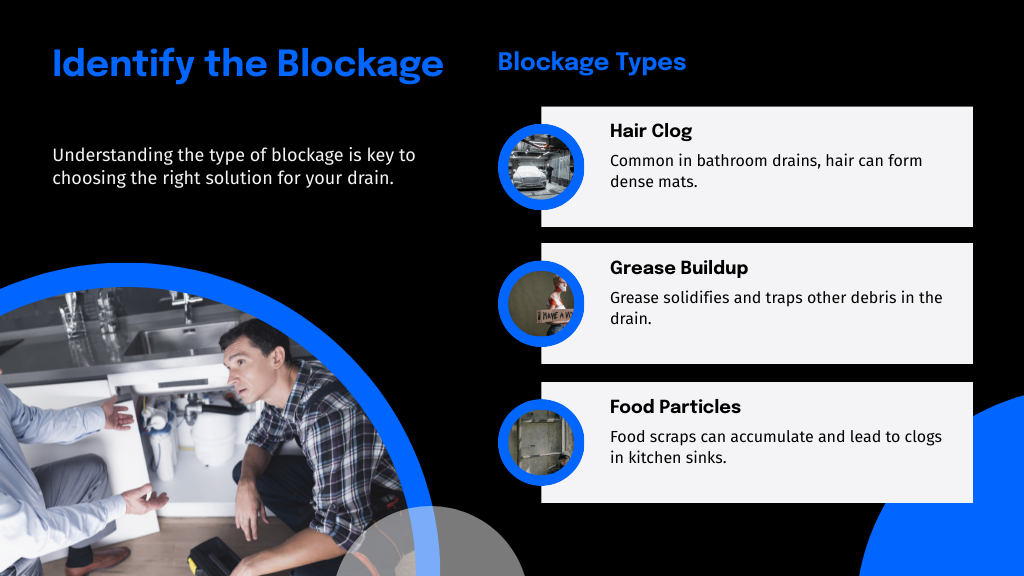
How can you effectively tackle a blocked drain if you don't first identify the type of blockage? Start by inspecting the drain to determine the cause. Common culprits include hair, grease, food particles, or foreign objects. If water drains slowly, it might be a partial blockage, while a complete blockage will prevent drainage altogether.
Use a flashlight to look deeper into the drain; this can reveal visible obstructions. If you notice standing water, it often indicates a clog near the surface. Understanding how to clear a blocked drain effectively depends on this initial assessment. Correctly identifying the blockage type will guide your next steps and guarantee you choose the right method for resolution.
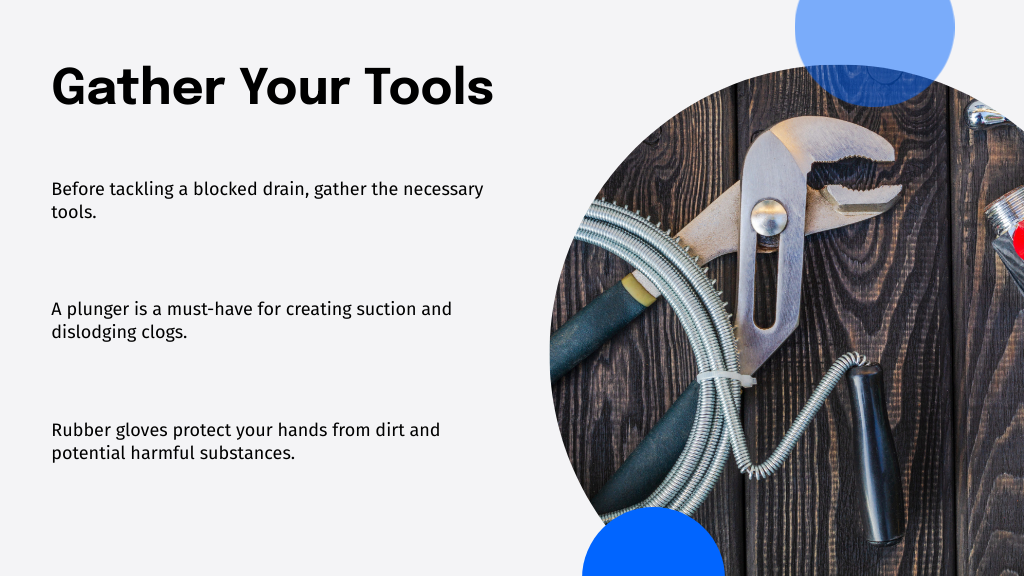
Before you start addressing a blocked drain, it's crucial to gather the necessary tools and materials. First, you'll need a reliable DIY drain unclogger, which can be a plunger or a plumber's snake, depending on the severity of the blockage. Make sure you have rubber gloves to keep your hands clean and protect against any harmful substances.
A bucket is useful for catching excess water or debris during the process. Additionally, gather some old towels for easy cleanup. If you're considering using chemical solutions, have a pair of safety goggles on hand. Finally, a flashlight can help you inspect the drain more thoroughly. With these tools ready, you'll be well-equipped to tackle the blockage effectively.
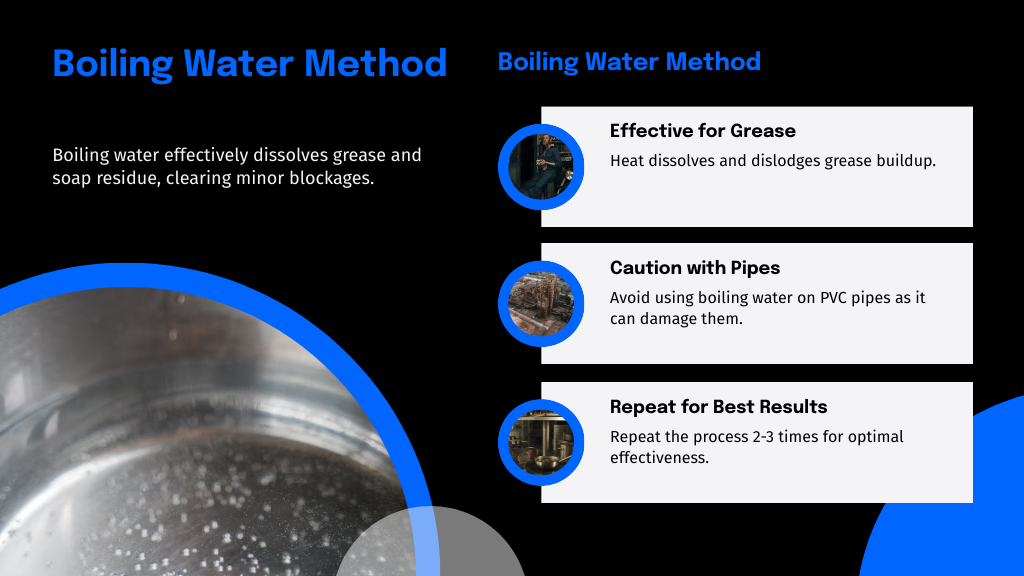
The boiling water method is a straightforward yet effective technique for clearing minor blockages in your drains. Start by boiling a kettle of water. Once it reaches a rolling boil, carefully pour it directly into the affected drain. This method works particularly well for grease or soap residue, as the heat helps to dissolve and dislodge the buildup causing the blocked drain.
For best results, you might want to repeat the process two to three times. However, avoid using boiling water on PVC pipes, as extreme heat can damage them. If this method doesn't clear the stopped drain, consider trying other DIY solutions or consult a professional to assess the situation further.
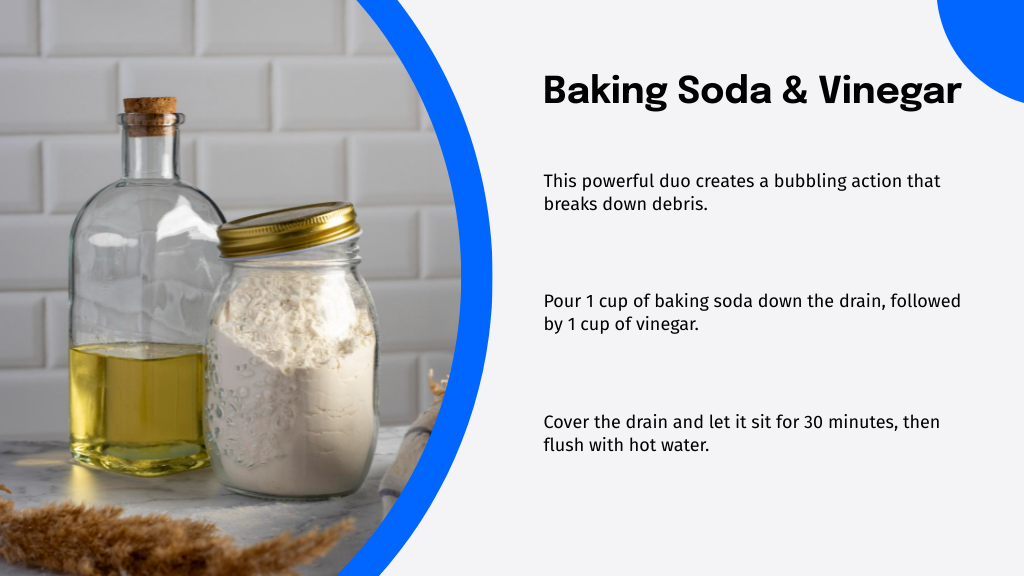
A powerful duo in your kitchen pantry can tackle stubborn drain blockages: baking soda and vinegar. This baking soda and vinegar solution acts as a natural drain unclogger, effectively breaking down debris.
Here's how to use it:
This method utilizes the chemical reaction between baking soda and vinegar, which creates a bubbling action that helps dislodge clogs.
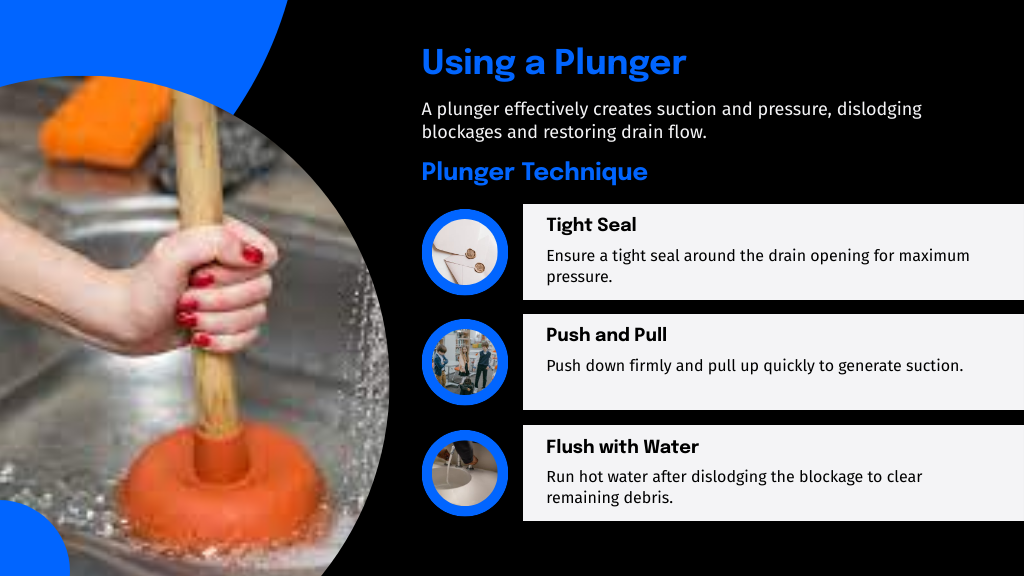
After trying the baking soda and vinegar solution, you might still face stubborn clogs that require a more hands-on approach. Using a plunger effectively is a straightforward method for drain clearing. First, make sure you have a cup-style plunger designed for sinks or toilets.
Position the plunger over the drain, creating a tight seal. Push down firmly to create pressure, then pull up quickly. Repeat this motion several times to generate suction and pressure that can dislodge the blockage.
If you're working on a sink, it's helpful to plug any overflow openings to maximize the pressure. Once you notice improved drainage, run hot water to help clear any remaining debris.
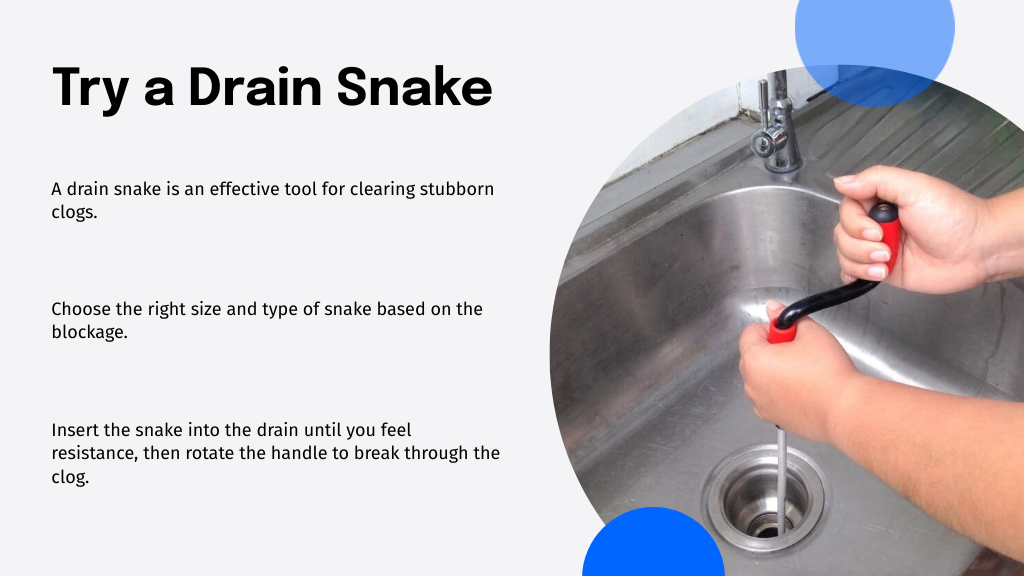
When facing a blocked drain, using a drain snake can be an effective solution. First, you'll need to choose the right snake for your specific blockage, as sizes and styles vary. Once you've selected the appropriate tool, mastering proper usage techniques will enhance your chances of clearing the drain efficiently.
Choosing the right drain snake can make all the difference when tackling a blocked drain. A proper snake not only saves you time but also enhances your drain unblocker DIY experience.
Here are four key factors to take into account:
To effectively use a drain snake, start by ensuring you have the right tools and a clear plan. Begin by removing any standing water from the sink. Insert the snake's end into the drain until you feel resistance. Rotate the handle to break through the clog. If you encounter stubborn debris, try using a homemade drain cleaner beforehand, as this can help dissolve buildup and make the snake's job easier.
After clearing the blockage, run hot water down the drain to flush out any remaining debris. Finally, clean the snake thoroughly to prevent the spread of grime. Regular maintenance and using homemade drain cleaner can help keep your drains flowing smoothly for the long term.
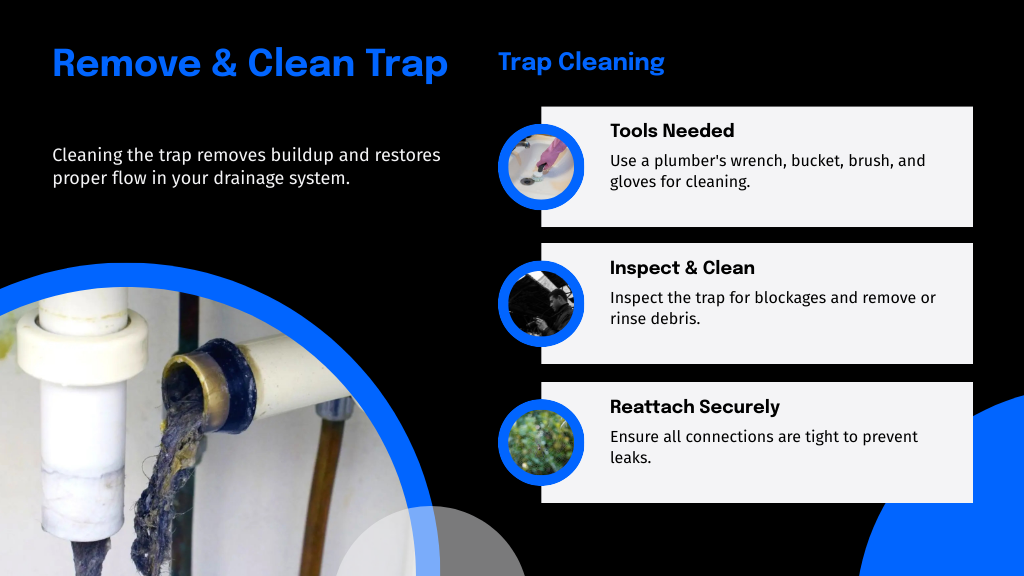
To effectively tackle a blocked drain, you'll need a few essential tools, including a bucket, an adjustable wrench, and a brush for cleaning. Start by carefully removing the trap, which is usually located beneath the sink, and follow these step-by-step instructions to clean it thoroughly. This process will help eliminate any buildup, restoring proper flow in your drainage system.
When tackling a blocked drain, having the right tools on hand makes the process smoother and more efficient. To effectively address a drain clog, here are the essential tools needed for cleaning:
With these tools, you'll be well-prepared to tackle the task of cleaning your blocked drain efficiently.
Before you start cleaning the trap, make sure you've gathered all your tools and put on your gloves for protection. First, place a bucket beneath the sink to catch any water and debris. Next, locate the trap—usually the U-shaped pipe—and carefully unscrew the fittings, using a wrench if needed. Once removed, inspect the trap for blockages. You can then manually remove debris or rinse it with hot water. If stubborn buildup remains, a brush can help loosen it. After cleaning, reattach the trap, ensuring all connections are tight to prevent leaks.
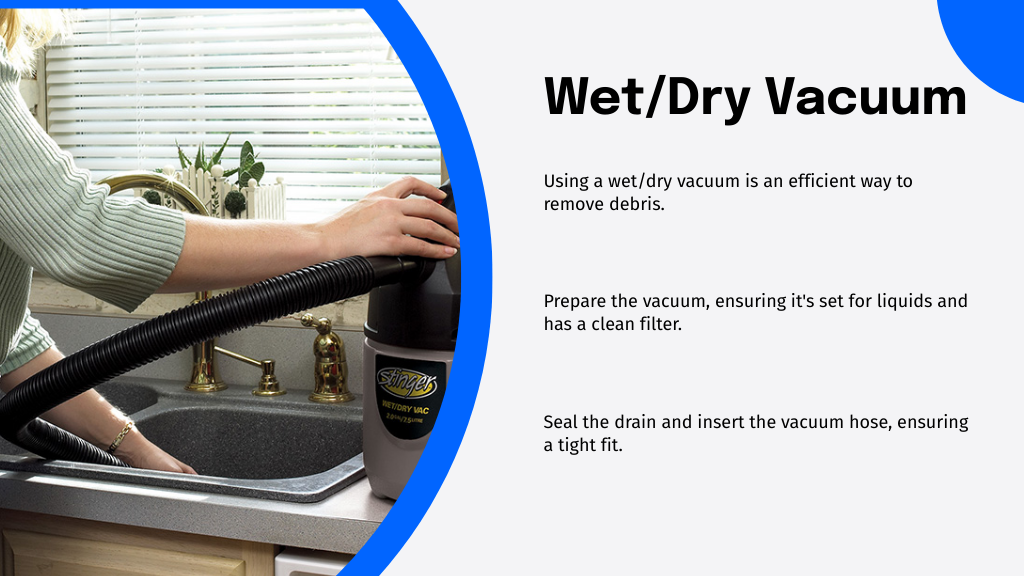
Using a wet/dry vacuum can be an efficient way to tackle a blocked drain, especially if you have one readily available. This blocked drain DIY method allows you to quickly remove debris without harsh chemicals. Here's how to do it:
This method often clears minor clogs effectively—saving you time and effort!
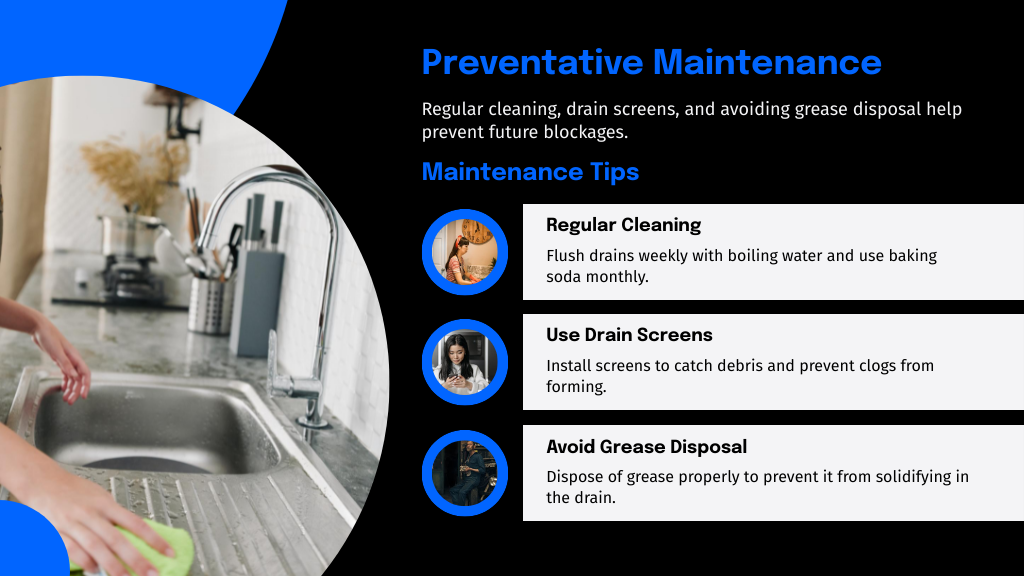
To keep your drains clear, establish a regular cleaning schedule to remove buildup before it becomes a problem. Installing drain screens can catch debris and prevent clogs from forming. Additionally, avoid disposing of grease down the drain, as it solidifies and contributes to blockages.
Establishing a regular cleaning schedule is essential for preventing blocked drains and maintaining the efficiency of your plumbing system. By incorporating simple home remedies for clogged drains, you can keep your pipes flowing smoothly. Here are four steps to include in your routine:
With this regular cleaning schedule, you'll reduce the risk of blockages and extend the life of your plumbing system.
While you mightn't think about it often, installing drain screens is a simple yet highly effective way to prevent debris from entering your plumbing system. These screens act as a barrier, catching hair, food particles, and other materials that could otherwise cause blockages. By fitting screens in sinks, showers, and tubs, you'll considerably reduce the likelihood of clogs developing.
Regularly clean the screens to maintain their effectiveness. If a blockage does occur despite your efforts, consider using a drain unblocker natural solution, such as baking soda and vinegar, to clear it without harsh chemicals. This dual approach of prevention and natural remedy can keep your drains flowing freely and extend the life of your plumbing system.
Preventing clogs goes beyond just using drain screens; it's also crucial to manage what goes down your drains. Grease is a major culprit in blocked drains, as it solidifies and traps other debris. To effectively avoid grease buildup, follow these tips:
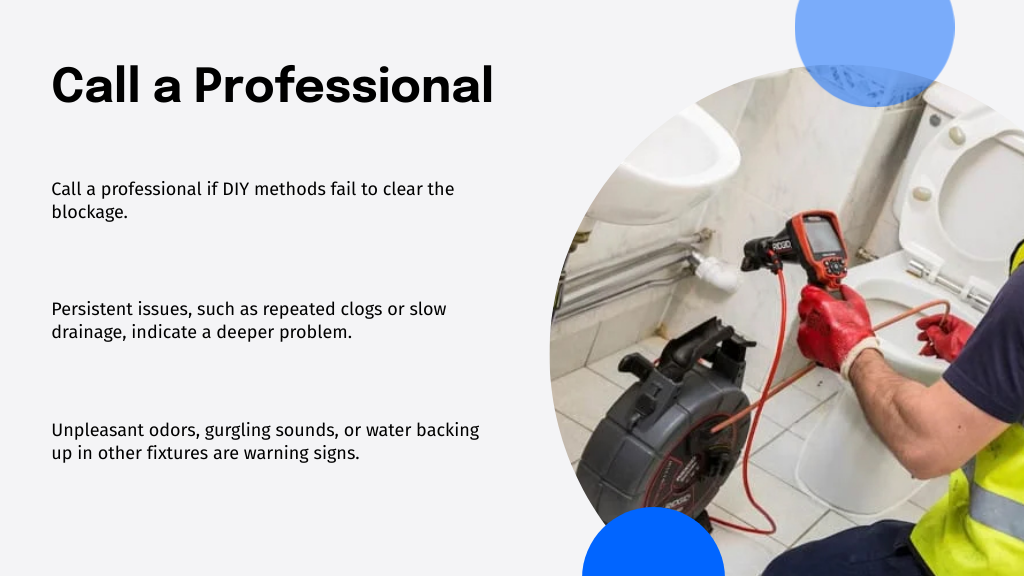
How do you know when it's time to call a professional for a blocked drain? If you've tried standard DIY methods like plunging or using a drain snake without success, it's essential to reconsider your approach.
Persistent issues, such as repeated clogs or slow drainage, indicate a deeper problem within the plumbing system. Additionally, if you notice unpleasant odors, gurgling sounds, or water backing up in other fixtures, these are warning signs.
A clogged pipe may involve more complex obstructions that require specialized equipment. Finally, if you're unsure of the cause or feel uncomfortable attempting further repairs, it's best to call a professional. Don't risk damaging your plumbing—getting expert help can save you time and money in the long run.
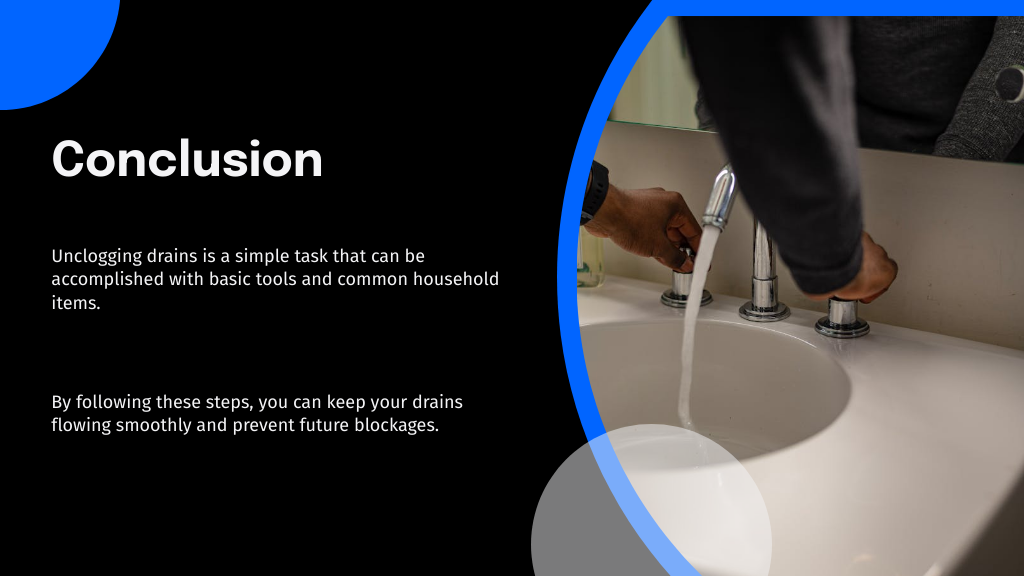
By following these steps, you can effectively tackle blocked drains, restore flow, and save time and money. You'll identify the blockage, gather the right tools, and apply simple methods like boiling water or a baking soda solution. You'll also learn how to use a plunger, clean the trap, and maintain your drains for the future. Remember, with a bit of effort and the right approach, you can manage your plumbing issues and keep your home running smoothly.
Your email address will not be published. Required fields are marked *